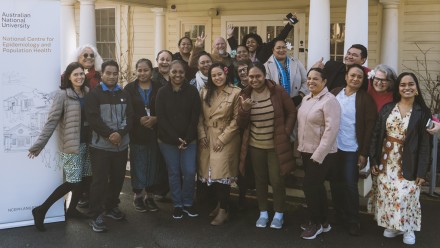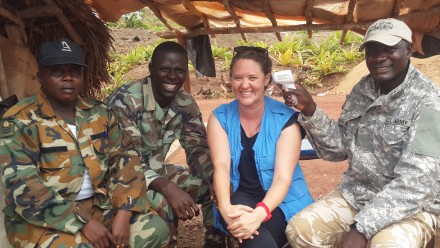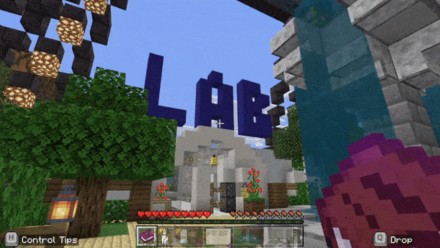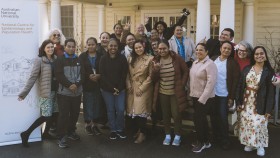Learn around the block: communicating population health in Minecraft
Share
How do you teach population health to high school students?
Researchers at the National Centre for Epidemiology and Population Health (NCEPH)—in collaboration with the Australian National Centre for the Public Awareness of Science (CPAS) and the ANU School of Computing’s TechLauncher program have embraced this challenge with a creative endeavour.
Their approach involves experimenting with designing a Minecraft mod that immerses high school students in the world of population health thinking.
If you're familiar with Minecraft, the evergreen, blocky world-builder game beloved by kids, teens, and adults, you'll know that players typically construct towns, buildings, cities, or entire worlds according to their inclinations.
However, the research team pondered a different question: Can this game be utilised to create a world where we explore concepts of population health?
"We knew we wanted to make a game, and that it's easier to develop modification for something already out there than starting something truly from scratch. Minecraft is popular and designed to be easy to understand even if you have limited literacy or experience playing games, so we chose as a start point.” Dr Erin Walsh from the Population Health Exchange at NCEPH explains.
“The game has been out for over a decade, and has already been used by educators in classrooms across the world to teach topics like history, science, and literature and skills like collaboration,” remarks Associate Professor Will Grant from CPAS.
“Interestingly, nobody seems to have used it to explore population health specifically—until now."
Enter the team of computer science students in TechLauncher. Over two semesters, they've diligently crafted a small town—Syndemitown—where inhabitants face the threat of a potential virus.
In this world, players take on the roles of policy maker, contact tracer, GP, engineer, and data analyst as they collaborate to combat that virus.
“A successful population health system is built on collaboration across distinct but complimentary fields,“ says Dr Walsh, “Due to the pandemic, people are more aware of thinking about health at the population level, but there's still room to build an understanding of how much of population health is a cross-disciplinary team effort.”
In the months ahead, the team aims to put the finishing touches on the game.
“Once Syndemitown is ready, we look forward to doing research with young people and educators to improve it," Dr Walsh says, ”We're hoping to learn more about how games can be best designed to foster fun and learning, and use it to improve young people's understanding of population health systems.”
Can a Minecraft mod truly teach the nuances of population health? The answer is on the horizon.
Researchers involved are Dr Erin Walsh, Alice Wetherell, Dr Ginny Sargent, Laura Sofoulis, and Dr Will Grant from the ANU; and Jin Kato from Questacon. The students involved include Yatong Jiang, Hongdong Yang, Weiqiang Pu, Rui Cong, Xhongxiao Zhang, Shengpeng Gao, and Feiyu Lai.











